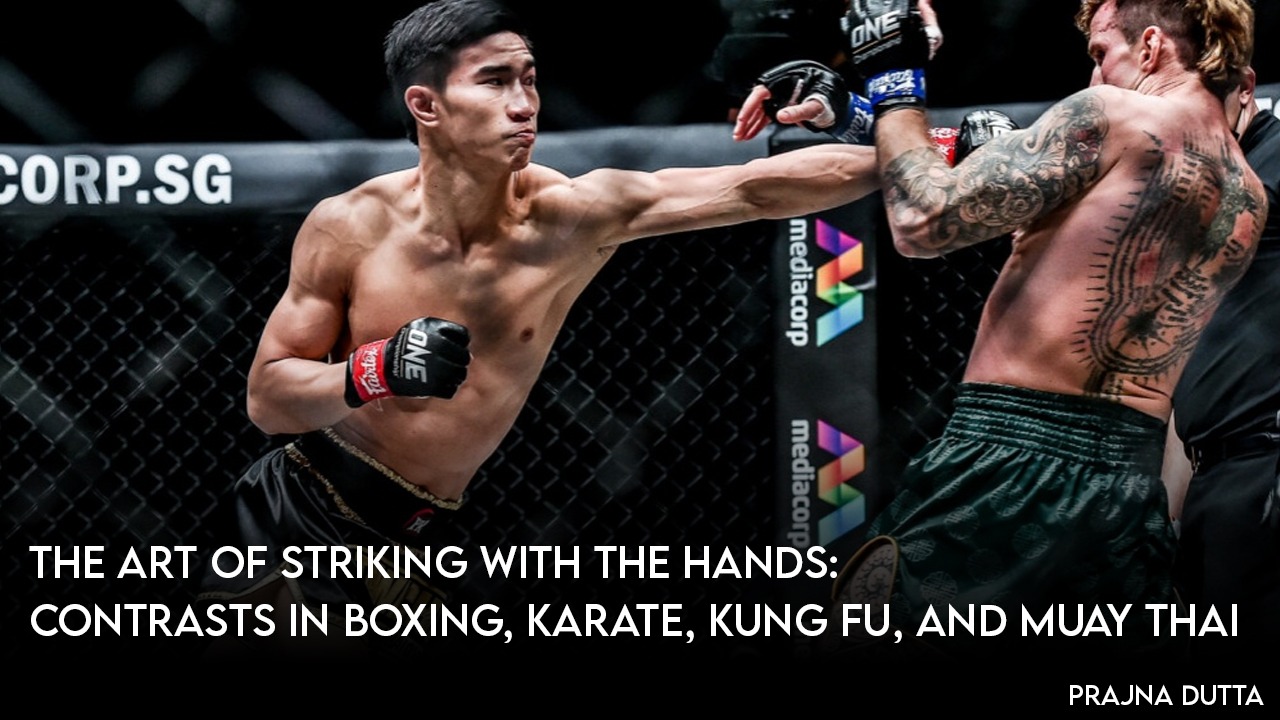Introduction:
Punching is a fundamental aspect of striking in various martial arts disciplines, each with its unique techniques, principles, and applications. From the precision and speed of boxing to the power and fluidity of Kung Fu, understanding the differences in punching styles across disciplines can provide valuable insights into the diverse approaches to combat. In this article, we will delve into the nuances of punching in Boxing, Karate, Kung Fu, and Muay Thai, highlighting key differences with examples and anecdotes.
1. Boxing:
Boxing is renowned for its emphasis on footwork, head movement, and powerful punches delivered with speed and precision. Some key characteristics of boxing punches include:
- Straight Punches: Boxers frequently utilize the jab and cross, straight punches thrown with the lead and rear hand, respectively, to set up combinations and control the distance.
- Hooks: Boxing hooks are powerful circular punches targeting the opponent's head or body, often used to generate knockout power.
- Uppercuts: Uppercuts are vertical punches thrown upward to target the chin or body, effective at close range or within the clinch.
Example: The legendary boxer Muhammad Ali was known for his lightning-fast jabs and footwork, using his speed and agility to outmaneuver opponents and deliver precise combinations.
2. Karate:
Karate emphasizes efficiency, focus, and explosive power in its striking techniques, incorporating various types of punches tailored for different situations. Key characteristics of Karate punches include:
- Reverse Punch (Gyaku-zuki): A staple technique in Karate, the reverse punch is a powerful straight punch executed from the rear hand, emphasizing speed and full-body rotation.
- Knife-Hand Strike (Shuto-uchi): The knife-hand strike is a Karate technique utilizing the edge of the hand for striking, often targeting vital points on the body.
- Hammer Fist (Tetsui-uchi): The hammer fist is a downward strike using the bottom of the fist, ideal for close-range combat and targeting vulnerable areas.
Example: In traditional Karate training, practitioners focus on developing explosive power and precision in their strikes through rigorous practice of kata (forms) and kihon (basic techniques).
3. Kung Fu:
Kung Fu encompasses a wide range of styles, each with its unique approach to punching techniques characterized by fluidity, circular movements, and a focus on internal energy. Some notable Kung Fu punching techniques include:
- Phoenix Eye Fist (Ying Jow): The Phoenix Eye Fist is a Kung Fu technique that involves striking with the knuckles of the index and middle fingers, aiming at pressure points or sensitive areas.
- Leopard Punch (Bao Quan): The Leopard Punch is a rapid, snapping punch resembling the strike of a leopard, known for its speed and precision.
- Dragon Claw Hand (Longzhua Zhang): The Dragon Claw Hand is a Kung Fu technique that mimics the claw of a dragon, emphasizing grabbing and tearing motions in addition to striking.
Example: Bruce Lee, a legendary martial artist known for his mastery of Kung Fu and Jeet Kune Do, showcased the fluidity and explosiveness of Kung Fu techniques in his iconic film fight scenes.
4. Muay Thai:
Muay Thai, also known as the "Art of Eight Limbs," incorporates punches along with elbows, knees
, and kicks to form a comprehensive striking arsenal. Muay Thai punches are characterized by power, balance, and strategic use within the clinch and at various ranges. Key features of Muay Thai punching include:
- Cross (Sok): The Muay Thai cross is a powerful straight punch delivered with the rear hand, often used to counter opponents or set up other strikes.
- Hook (Mat): Muay Thai hooks are typically thrown with the lead hand and emphasize rotational power to target the opponent's head or body.
- Elbow Strikes (Sok Sib, Sok Ngad): Muay Thai incorporates various elbow strikes, including horizontal, upward, and downward elbows, utilized at close range to devastating effect.
Example: In Muay Thai fights, practitioners often showcase their punching skills in combination with knee strikes and elbow strikes, creating a dynamic and versatile striking game that is both powerful and effective.
Conclusion:
The art of punching in Boxing, Karate, Kung Fu, and Muay Thai reflects the rich diversity and unique characteristics of each martial arts discipline. While Boxing emphasizes speed and precision, Karate focuses on explosive power and efficiency. Kung Fu showcases fluidity and circular movements, while Muay Thai highlights power, balance, and versatility in striking.
By understanding the nuances of punching techniques across these disciplines, martial artists can broaden their knowledge, refine their skills, and appreciate the depth of each art form. Whether you are a practitioner of one specific style or a martial arts enthusiast exploring various disciplines, incorporating elements of different punching styles can enhance your overall striking game and contribute to your growth as a well-rounded martial artist.

Comments